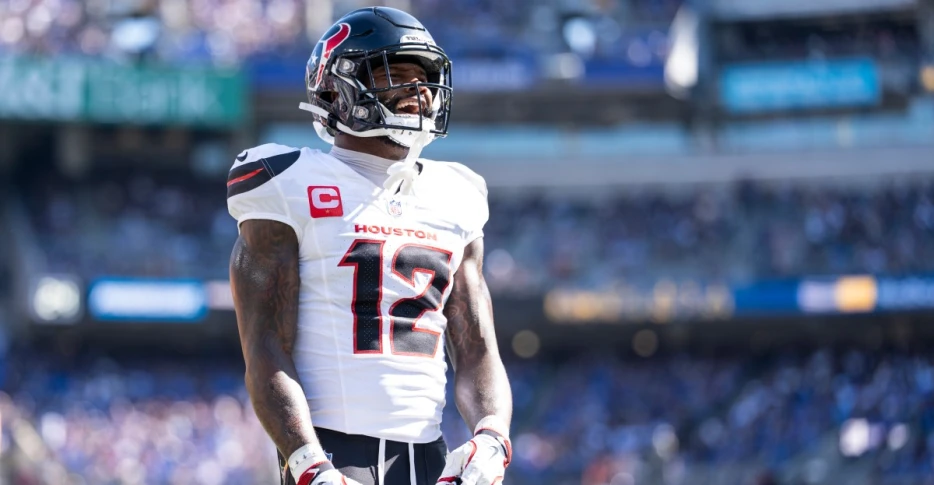
 Battle Red Blog
Battle Red Blog
If it feels like the Texans’ star wideout is having a down year—it’s because he is. Using Next Gen Stats and PFF grades, we’ll break down what’s behind his fifth-year slump. And no, it’s not the result of his new contract.
Through five games, Collins has accumulated 22 receptions for 312 yards and three touchdowns. While he’s never completed a full 17-game season, he’s still on track for 75 receptions and over 1,000 yards. Still impressive, but they pale in comparison to his last two seasons where he amassed 1,297 and 1,006 yards in 15 and 12 games respectively.
Let’s rule out several alternative stories. The 2025 Texans offensive line is arguably slightly better than the past two seasons. The sack and QB pressure rates on C.J. Stroud are comparable. The other weapons vying for targets is comparable too. Collins competed with pre-ACL tear Stefon Diggs in 2024 and an emerging Tank Dell in 2023, plus 80+ target seasons for TE Dalton Schultz. All things considered, the ecosystem around Collins is fairly stable.
Let’s take a look at where Nico is receiving the ball over the past three seasons. This data is provided by PFF.
Collins is almost fully absent from the right side of the field in 2025. For a right handed QB, this is inexplicably difficult to comprehend. These should be the safest and most routine routes for the receiver. There is quite a consistent trend of Collins’ catches occurring in the middle of the field, but the lack of downfield presence by Collins has limited his upside. This is due to a general shortening of the field in Stroud’s throwing arsenal. For Collins to return to dominance, he must regain those 10 – 19 yard strikes down the field that utilize his length and physicality. To do that, the Texans offensive line needs to block long enough.
As a visual, the below game against a weak Baltimore team illustrates the limitations on his routes where he’s targeted. Two slant routes, a post route, and a broken play (catch on the far right). His route tree when targeted has diminished dramatically.
Lastly, we’ll look into several interesting stats provided by NextGen Stats. Collins is receiving slightly more cushion this season and has subsequently created less separation. This means that defensive backs are laying off Collins and protecting against deeper routes.
So, is that the final culprit? Is it truly that DBs are giving Collins more cushion, which is shortening his routes and decreasing his productivity? While this is a possible cause, Collins still isn’t in the top 50 WRs for cushion yardage this season. Plus, the average length down the field (Targeted Air Yards) is almost identical over the past three seasons at 11.2 – 11.4 yards.
What appears to be the main culprit is a trio of statistics: QB C.J. Stroud’s Time to Throw, the Yards After Catch per Reception, and Missed Tackles Forced. To summarize, Stroud’s time to throw has decreased each season, when Nico Collins...